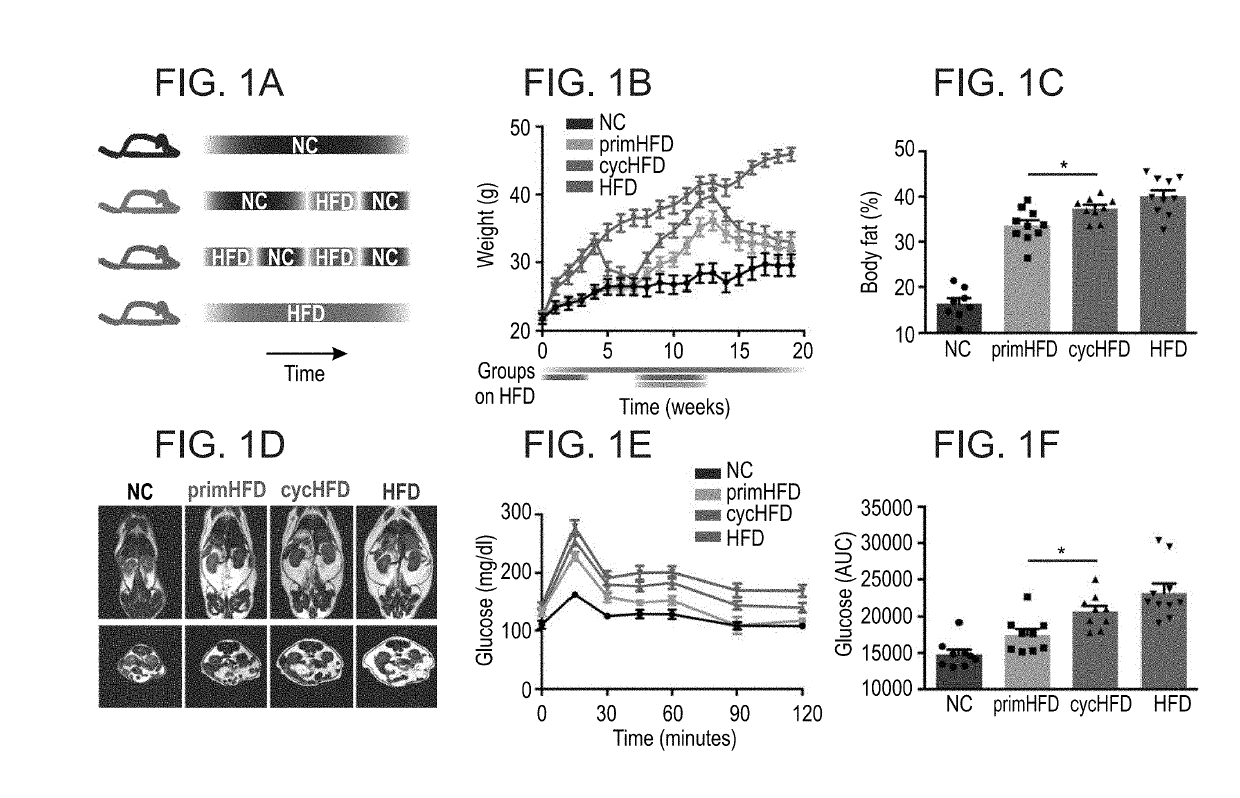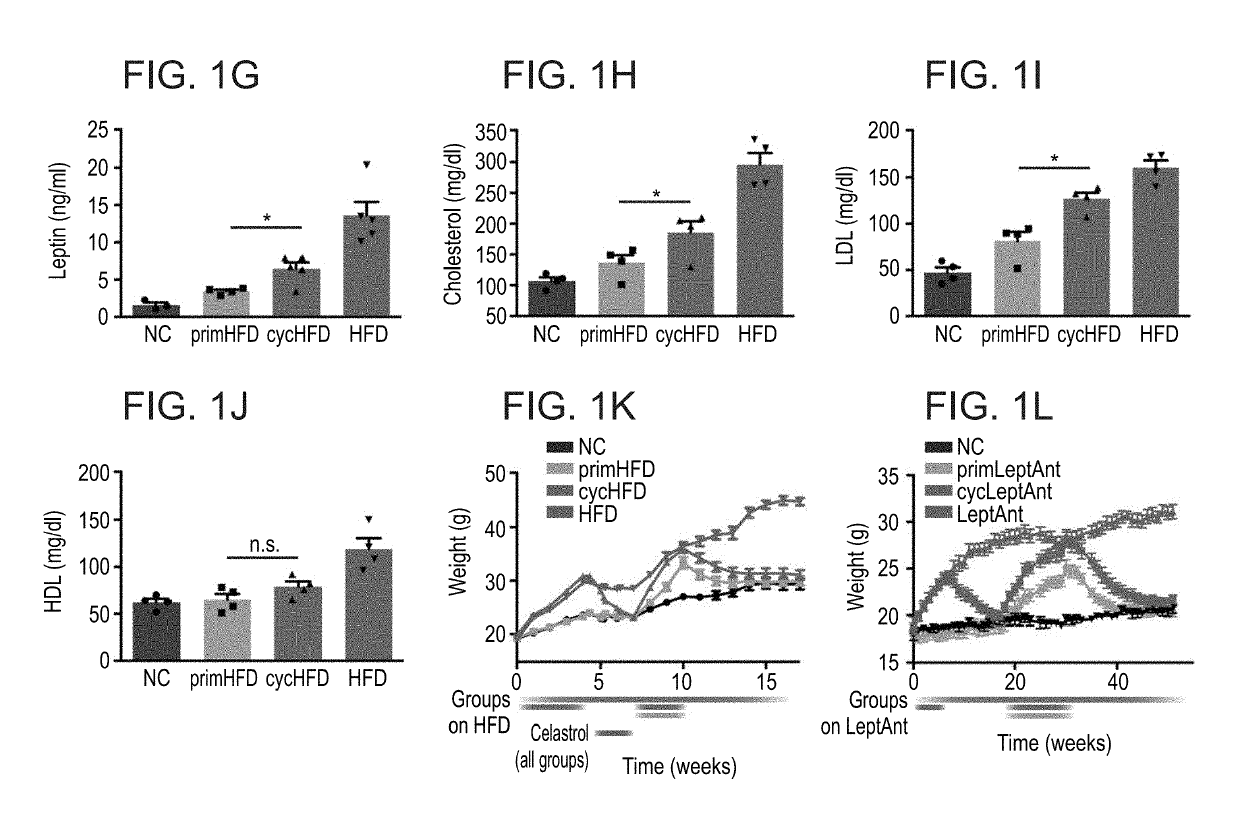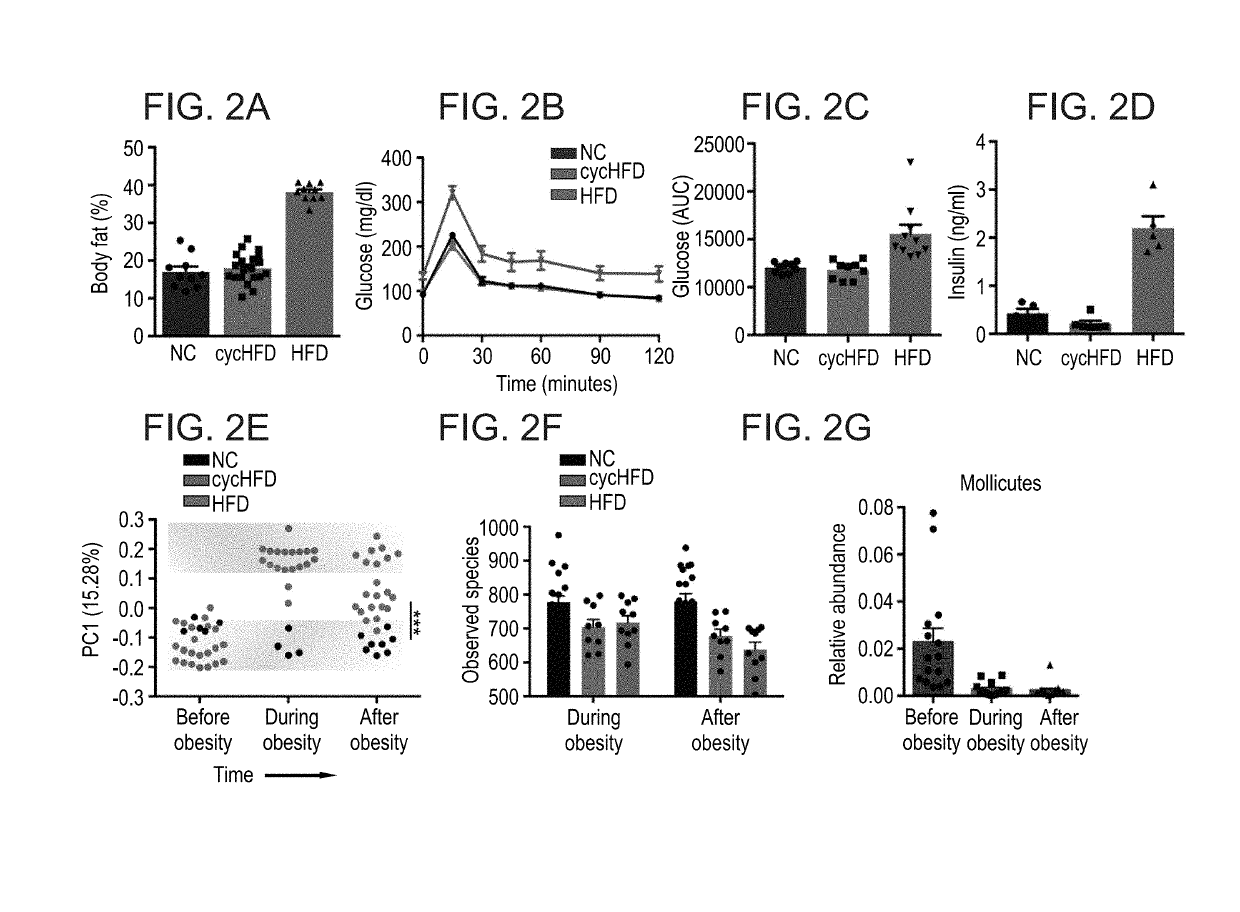Microbiome-based diagnosis, prediction and treatment of relapsing obesity
- Summary
- Abstract
- Description
- Claims
- Application Information
AI Technical Summary
Benefits of technology
Problems solved by technology
Method used
Image
Examples
example 1
Enhanced Recurrent Weight gain after Treatment of Obesity
[0278]To study the mechanisms underlying post-dieting weight gain, a mouse model of relapsing obesity was used, in which mice were exposed to cycles of high-fat diet (HFD) feeding, intermitted by normal chow (NC) consumption (cycHFD). Consequently, in these mice, weight gain and features of the metabolic syndrome developed during exposure to HFD, followed by recuperation and weight reduction during exposure to NC, ensuing by a second cycle of HFD and associated metabolic derangements. As controls, mice continuously fed a HFD, mice continuously fed an NC diet and mice which were exposed to only a single cycle of HFD (primHFD) were used (FIG. 1A). As observed in recurrently dieting humans (3), a preceding obesity-weight loss cycle rendered mice susceptible to accelerated and enhanced secondary weight gain, even after fully returning to baseline weight (FIG. 1B). This relapsing obesity was characterized by an increase in total bo...
example 2
Persistence of a Memory-like Microbiome Signature after Weight loss
[0281]Since secondary weight gain was associated with enhanced metabolic derangements despite a full return to normal weight, it was hypothesized that initial obesity had caused persistent abnormalities that predisposed mice to relapsing metabolic disease upon re-feeding with HFD. The present inventors therefore performed metabolic profiling at the nadir phase, i.e. when previously obese mice had returned to their original weight. However, despite marked metabolic derangements during the obese phase, body fat content, glucose tolerance, and serum insulin levels were indistinguishable between post-dieting mice and their non-cycling controls (FIGS. 2A-D). Similarly, other hallmarks of obesity, such as physical activity, food and drink intake, oxygen consumption, energy expenditure, serum levels of leptin, and adipose tissue inflammation all returned to normal levels upon weight loss. In contrast, the composition of the...
example 3
The Persistent Altered Microbiome Drives Exaggerated Recurrent Weight gain
[0284]The present inventors next sought to investigate whether the post-obesity microbiome signature was causally involved in the metabolic complications associated with relapsing weight gain.
[0285]To this end, following a HFD consumption period, mice were treated with broad-spectrum antibiotics (vancomycin, neomycin, ampicillin, and metronidazole) during the following weight loss period (FIG. 3A). Notably, antibiotic treatment during dieting abolished the persistence of a post-obesity microbiome signature upon return to normal weight, as determined by 16S sequencing, and equilibrated the microbiota composition between previously obese mice and constantly lean controls (FIG. 3B). Remarkably, antibiotic treatment also abrogated the exacerbation of metabolic derangements upon weight regain, including body fat content and glucose intolerance, while control mice without antibiotics that were included in the same e...
PUM
| Property | Measurement | Unit |
|---|---|---|
| Weight | aaaaa | aaaaa |
| Antimicrobial properties | aaaaa | aaaaa |
| Weight loss | aaaaa | aaaaa |
Abstract
Description
Claims
Application Information
 Login to View More
Login to View More - R&D
- Intellectual Property
- Life Sciences
- Materials
- Tech Scout
- Unparalleled Data Quality
- Higher Quality Content
- 60% Fewer Hallucinations
Browse by: Latest US Patents, China's latest patents, Technical Efficacy Thesaurus, Application Domain, Technology Topic, Popular Technical Reports.
© 2025 PatSnap. All rights reserved.Legal|Privacy policy|Modern Slavery Act Transparency Statement|Sitemap|About US| Contact US: help@patsnap.com



